Just a decade ago, the average 3D printer was an industrial fixture costing thousands. Today your typical printer can sit on a desk and probably costs a lot less than the device you’re using to read this very text. It’s easier than ever to find an excellent cheap 3D printer for even the smallest of budgets. $200 will comfortably cover a superb starter machine that can get you printing within minutes.
Our first batch of recommendations covers the filament end of the 3D printing spectrum. These machines are top value for money for whipping up creations from PLA, PETG, ABS, and other standard thermoplastic filaments.
The Best Budget Filament 3D Printers
Under $200, $300, $500 & $1,000
Resin 3D printing is the way to go for high-detail and intricate models. The print results have to be seen to be believed, and you’d be hard-pressed to tell they’re even 3D printed without the help of a magnifying glass.
The Best Budget Resin 3D Printers
Under $200, $300, $500 & $1,000
How to Pick a Budget 3D Printer
3D printing on a budget typically means cutting creature comforts for a lower price. In relative terms of print quality, you won’t see an improvement in print quality that correlates with the difference in spending. A $1,000 3D printer won’t tangibly print five times better than a $200 3D printer. This is especially true of LCD-based resin 3D printers, which have mostly plateaued as far as print quality gains go.
Instead, the money goes into the quality of components (and therefore longevity, ease of replacement), support, development, and sophistication in the hardware you’re using. A sub-$200 3D printer will be, by most measures, basic compared to the self-diagnostic wizardry from many of the machines that push $500 and beyond. Knowing this going into this article, it’s easy to see how the technology scales with the price point.
In this list, we’re focusing on four price brackets, showing you what we feel are the best 3D printers for cheaper than $200, $300, $500, and $1,000. There’s no shortage of similar machines, too, so while the printers presented here are the sharp edge of our recommendations, watch out for mention of other 3D printers we’ve considered and think are also worth your attention.
Best Budget 3D Printers (Filament)
Under $200: Creality Ender 3 V3 SE
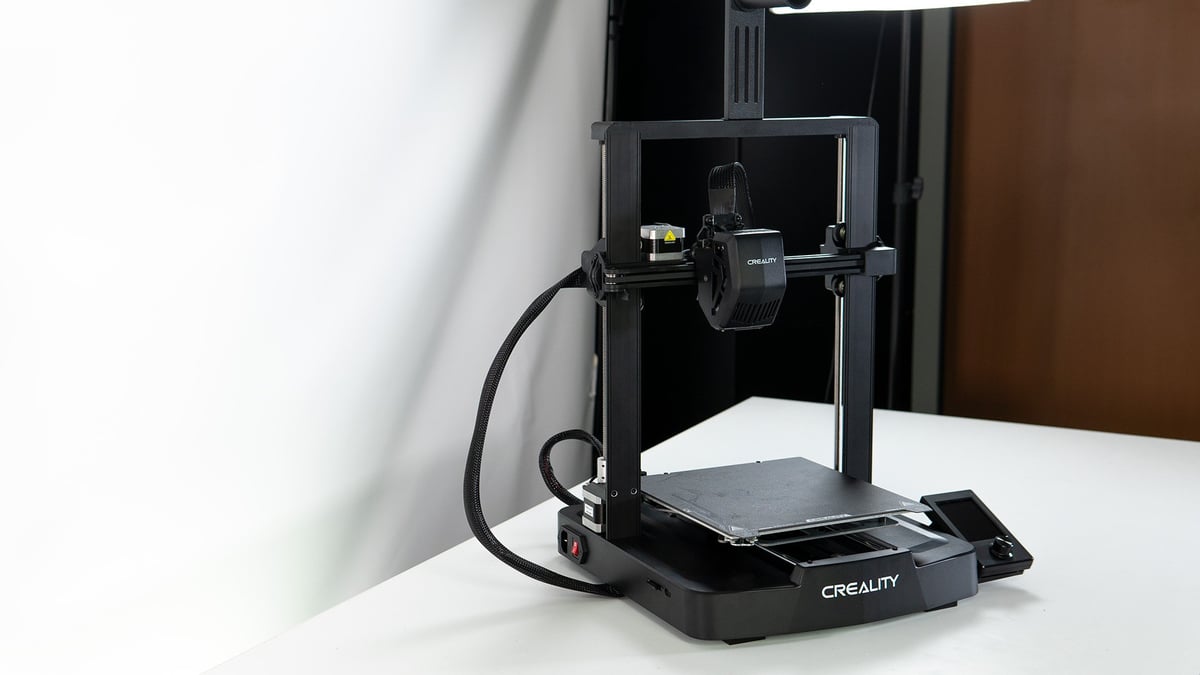
The Creality Ender 3 V3 SE sets a new baseline for cheap 3D printing, blending a familiar form with the beginner-friendly fully automatic bed leveling and self-offsetting giving effortlessly perfect first layers.
Its standard features run to a 220 x 220 x 250 mm build volume, with a Sprite dual-gear direct extruder feeding filament to a hot end that tops out at 260°C. Printing through the full height is served by a dual Z-axis motors, ensuring stability throughout.
In our time printing with the Ender 3 V3 SE, we’ve found it to be a little workhorse. While it lacks the flashier features and firmware of today’s pricier machines (it runs Marlin firmware out of the box), it offers a fuss-free printing experience that’s a clear evolution on similar machines from previous years. Refined could be a word to describe it, but despite our warm feelings toward it, there are some odd ommissions – including a filament sensor, which in this day and age seems so standard a feature that it’s conspicuous by its absence, even in a sub-$200 machine.
Print job preparation is simplest using the provided Creality Print software, which includes a profile for the V3 SE. You can, of course, slice using other open software such as Cura and PrusaSlicer.
Print removal is a cinch thanks to a magnetic PC-coated print sheet, however lining it up when replacing it after a print can be fussy and result in misalignment with the two screws that serve as guides. But this is small beer against the great prints and ease with which you’ll be printing.

Under $300: Sovol SV06
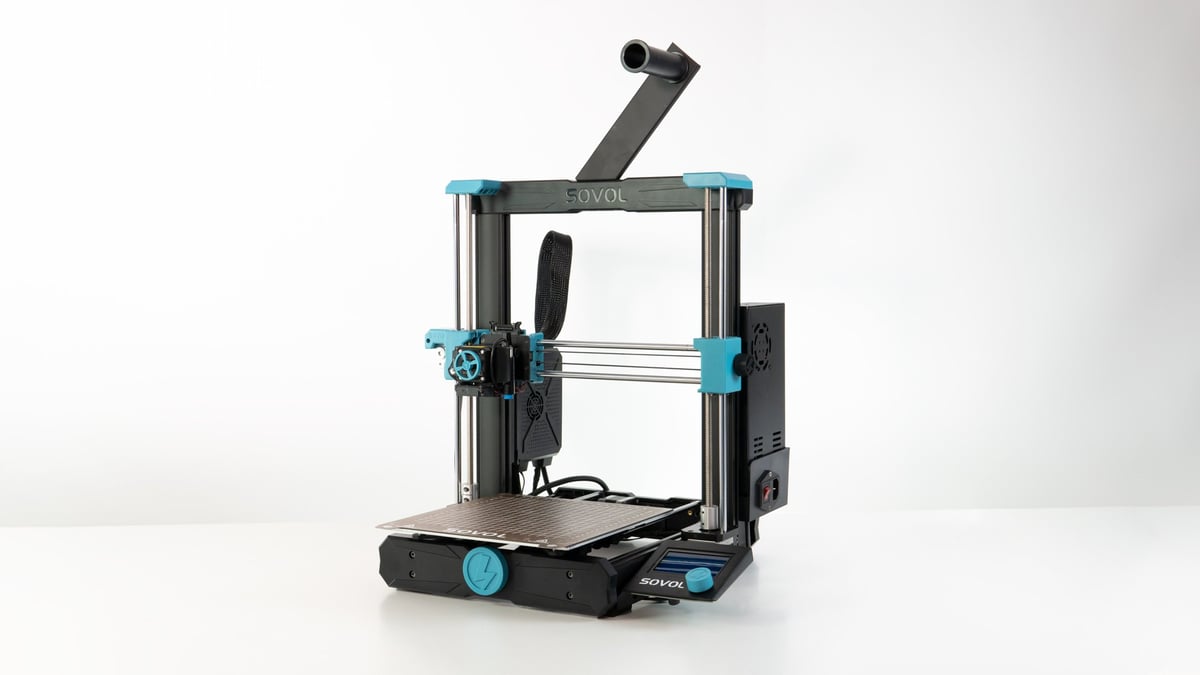
The Sovol SV06 made waves on its launch, with a design that closely follows the Original Prusa i3 series but for a fraction of the price. Where Prusa i3 machines can cost as much as a thousand dollars, depending on where you source them, the SV06 offers similar hardware for just ~$210. This is not to say the systems are the same (Prusa’s software and quality control are next level), but the SV06 manages to offer a great experience for a very accessible price.
Part of that experience is the SV06’s auto-calibration routines. These handle both the mesh bed leveling of the printer’s fixed bed using an inductive sensor and leveling the X-axis that rides on a dual-driven Z. In short, the SV06 eliminates some of the more tedious maintenance routines.
The one thing to watch out for when considering the SV06 is its poor performance with flexible materials. The system’s direct extruder with planetary gearing performs great with rigid filament, but we found flexibles tend to get caught up in the gearing and jam. But, given the all-metal hot end, you can still use more rigid high-temperature filaments than is typical for machines in its price range.
During our review, we also found the SV06’s TMC2209 stepper motors to be remarkably quiet – making for a tidy home printing solution. It’s an excellent machine suitable for enthusiasts looking for something hassle-free and for beginners who want to tap into the community experience of a popular system.
Savvy shoppers may notice that Sovol offers an SV06 bundle for ~$290 that includes a Sovol-made Klipper screen and the accessories necessary to implement input shaping. This alone will boost the printer’s speed to match similar new printers and give it a much larger, tappable display with more customizable firmware behind the scenes.

Under $500: Bambu Lab A1
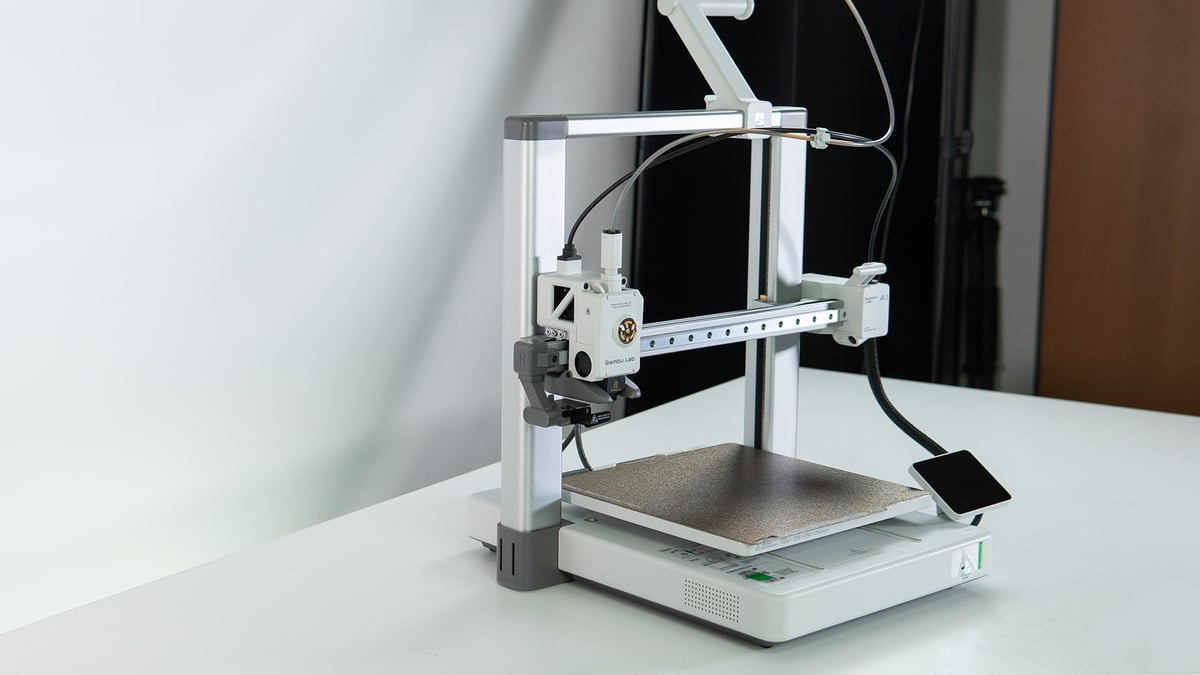
Update: The Bambu Lab A1 3D printer is temporarily unavailable following a recall action by Bambu Lab. Hit the link to read more.
There are highly capable CoreXY-style printers also available for the A1’s less than $500 price tag, all giving decent prints at a high-speed clip and, in many cases, offering desirable firmware experiences with Klipper. However, it’s the ease of use and ecosystem that tip things in the A1’s favor here.
The Bambu Lab A1 is a tightly tuned “standard” sized printer capable of dampening its movements to eliminate the motor noise of itself printing. Don’t be fooled into thinking it’s completely silent, though – all printers are hissing boxes of fan noise to varying degrees. This one’s just a little quieter.
Fortunately, the list of tricks up its sleeve goes on, including a nicely designed removable PEI print bed that facilitates easy print removal and snaps back into position with ease. There’s a large full-color touchscreen UI to tap away at and follow through the guided setup, and, generally, you’re never left guessing as to what’s happening and where you are.
By default, the A1 can print quickly, too. 500mm/s is the advertised speed, though this is going to vary depending on the material you’re using and the objects you are printing.
The A1’s main advantage over similarly-priced systems is its toollessly swappable hot ends. Held in place by a metal cage you can open with one hand, you can drop in a variety of nozzle sizes and toughnesses (all official Bambu Lab products, priced reasonably fairly). Select your new nozzle type in the software, and the slicing parameters will adjust automatically. This makes it effortless to scale your printing up or down, from the strength given by chunky layers to high-detail miniatures only possible with a 0.2 mm nozzle.
Lastly, there’s the possibility to add Bambu Lab’s AMS Lite four-filament system, letting you use different colors and materials in the same print. It’s an additional ~$249 purchase (or part of a discounted $559 bundle for both printer and AMS Lite) that seriously augments the printer’s abilities and your options for printing.

Under $1,000: Bambu Lab P1S

Building on the success of its budget P1P offering, the Bambu Lab P1S is arguably the company’s best-value printer, giving you a fully enclosed 256 x 256 x 256 mm build volume, super quick print speeds, an auxiliary cooling fan to maintain stability printing at speed, an air filtration unit, and out-of-the-box compatibility with Bambu Lab’s excellent AMS multicolor material station for $699.
The Bambu Lab P1S is an easy recommendation for a lot of different situations. For beginners, it’s a streamlined experience that requires little effort or prior knowledge from users to achieve great results. For more experienced makers, it’s a reliable machine that requires little input when you need a high-quality print quickly.
Its enclosure, more than just helpfully rounding out the materials it’s compatible with, is great for limiting the spread of UFPs and generally increasing success rates when 3D printing. It also just helps the system look contained in a home setting, which is a major plus for regular users.
Recent updates to Bambu Lab’s software ecosystem mean it’s now possible to print directly on the machine from the company’s smartphone app, with no computer necessary. The whole process is, in a word, convenient. It’s the closest thing to the 3D printer as a household appliance.

Best Budget 3D Printers (Resin)
Under $200: Anycubic Photon Mono 2
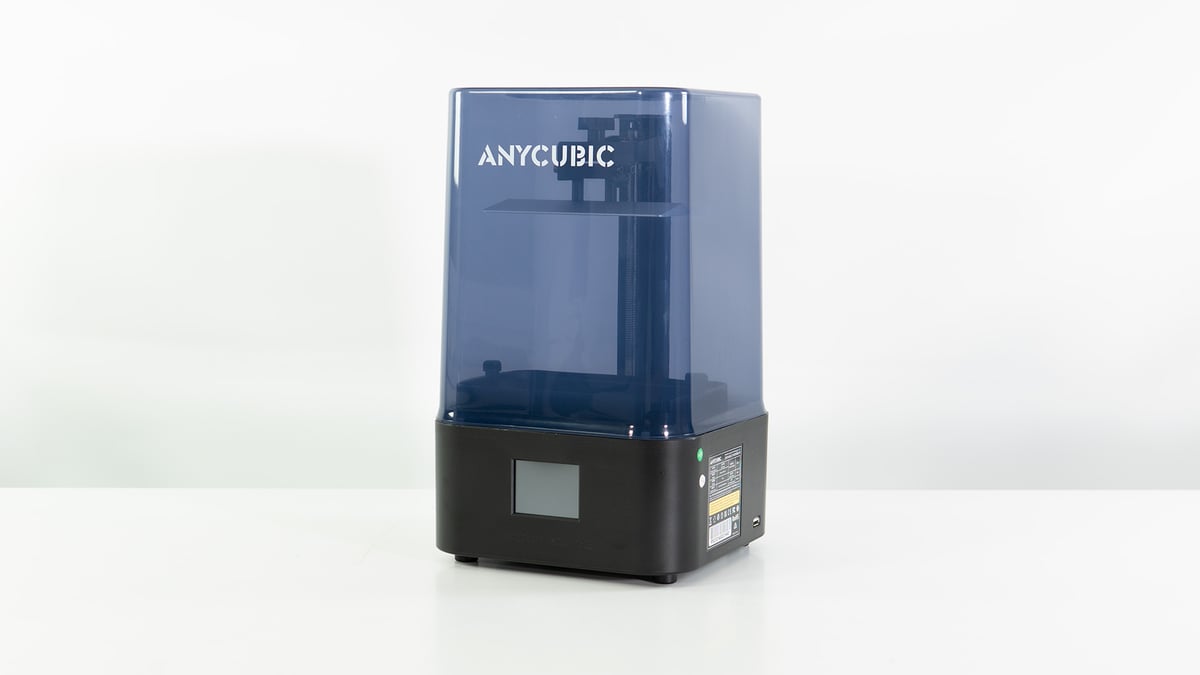
This ultra-budget resin 3D printer from Anycubic is a no-frills workhorse that’s simple to operate and reliably returns high-quality prints for your efforts. Easily found for ~$170, the bang you get for your buck is terrifically high; with a 6-6-inch LCD crammed inside the printer’s teeny footprint, you get a deceptively large 165 x 89 x 143 mm build volume to work with.
Inside the Photon Mono 2 is a 4K mono LCD, which equates to a pixel size of 43 microns – plenty small enough to render stunningly crisp detail on any model you throw at it.
Interacting with the machine can be a bit fiddly, with the printer’s spartan exterior interrupted only by the 2.8-inch touchscreen front and center and a full-size USB port on the side. The printer is noticeably light, meaning any knocks and bumps resulting from interacting with it can tip it – not a desirable trait for a machine with a large, shallow pool of toxic resin inside.
In addition to a fancy laser etching on the build side, the build plate design is angled to allow resin runoff post-print. You’ll have to level it yourself before you can print, a matter of fixing four machine screws with the plate at its origin. It’s not a complicated procedure, and it’s something you can expect of a budget resin 3D printer.
Given the mess that resin 3D printing can make, Anycubic hedges things in your favor with a large screen protection kit included in the box. This guards the fragile LCD mask against resin spills, helping you eke out the full lifespan of the LCD before replacement is necessary.
Software-wise, the slicer Anycubic provides is decent enough for general printing, with all essential preparation tools, including hollowing and hole punching, available to you out of the box. The Mono 2 is also compatible with third-party slicers, so you can use it with your preferred software instead.
Lightness and “eh” display aside (we can’t begrudge that last one much at this price point), the Photon Mono 2 is a comfortable pick.

Under $300: Elegoo Mars 4 Ultra
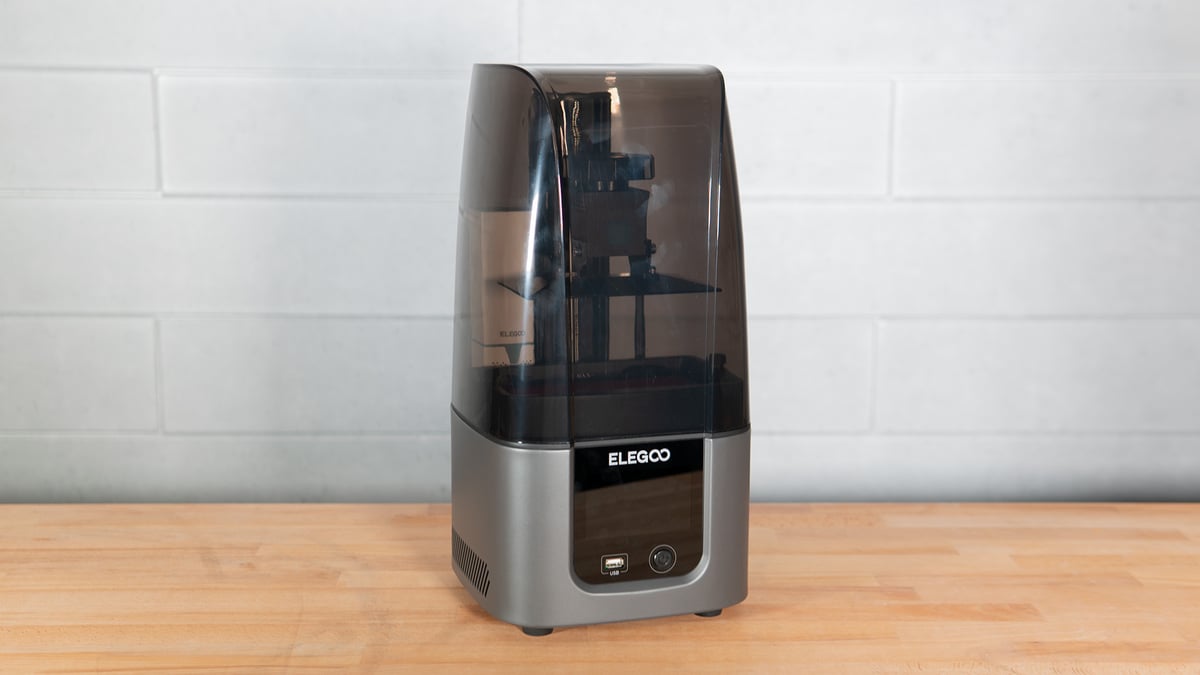
Taking the Elegoo Mars design to its functional zenith, the Mars 4 Ultra is the budget printer to go for if you want high-resolution printing at speed.
Cramming more pixels into roughly the same build area as its predecessor shrinks the pixel size down to 18 microns. If you value the bleeding edge of resolution possibilities in LCD-based 3D printing, then this is it. While this should translate to the crispest of detail and undetectable voxels (provided you print with a suitably fine layer height), some users report the ACF film used as an interface layer in the vat for higher print speeds muddies the detail, taking that resolution advantage over other systems off the table. At casual observation, we can’t tell the difference. Haven’t been able to for years. Your success in achieving pixel-perfect prints will come from suitable preparation, dialing in your print, and resin settings for your particular environment. Beyond that, you’re dancing with the professionals, chasing a diminishing return.
So, the Mars 4 Ultra brings the resolution and puts it to use inside a 153.36 x 77.76 x 165 mm build volume. Upgrades to the light engine see a focus on light uniformity across the build area, while distinct features include Wi-Fi connectivity and speedier printing through the use of the aforementioned ACF film and the release of Elegoo’s Rapid Standard resin. Both are modern conveniences that we’re generally happy to see. The connection speed is decent, which is particularly helpful for slinging the chonky files that you typically get with large, detailed resin 3D prints.
A perpetual license for TangoSlicer is included in the box, which we greatly appreciate, too. It’s a competent slicer that comes with a wealth of control and automation tools for preparing your prints. If you’re familiar with the likes of Chitubo Basic or Lychee Slicer, the Mars 4 Ultra is compatible there, too. No need to learn the idiosyncrasies of a new slicer. Phew.
Hot tip for Tango users on Windows with high DPI displays – disable the application-specific scaling in the program’s properties. It attempts to reframe the program to suit your lovely monitor or screen but bumps essential buttons off the edges. You can’t resize Tango’s popup dialogues, either, rendering the slicer more or less impossible to use. With it disabled, everything jumps back into view.

Under $500: Anycubic Photon Mono M5s
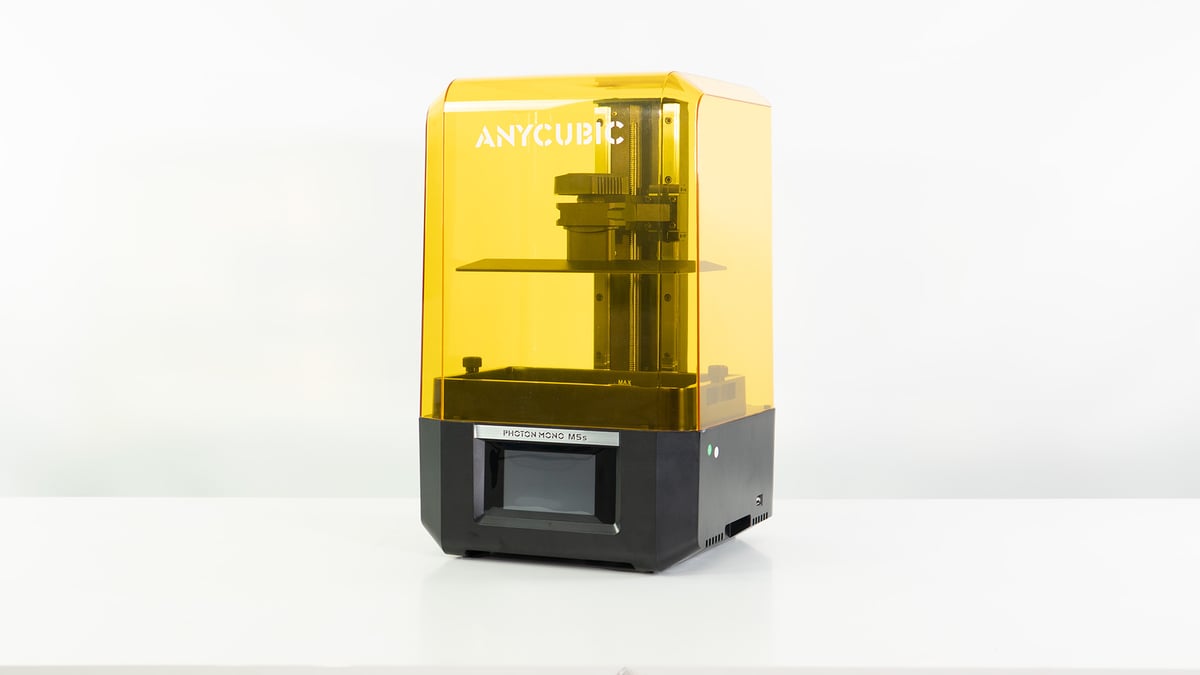
Anycubic’s shiny new Photon Mono M5s is a different breed of desktop resin printer, with the introduction of print-boosting smarts, the likes of which we’ve only really seen in filament 3D printing over the last couple of years. Packing a print-plate gantry-mounted sensor, the M5s can detect peel force, resin level, and the vat bottom to augment your printing experience.
In testing, we didn’t find it to be flawless mind, but that this system pulls off even half of what it does makes the M5s our preferred choice over all the other desktop 3D printers we’ve experienced of late.
All of the above is in a compact frame, to boot – the Photon Mono M5s’ dimensions are barely any larger than the likes of the Phrozen Sonic Mini 8K S and Photon Mono 2, both machines we consider to be small 3D printers, yet it punches out with a 200 x 123 x 218mm build volume.
It’s ready to run right out of the box, running a short checklist of self-checks before letting you rattle off prints at its heightened print speeds, made possible by an alternate vat film material that releases prints easily and some shenanigans with thick layer heights and loose resin that works better for that. The truth is you can print quickly with the Photon Mono M5s and “standard” resins, but it’s more that blistering print speeds are achieved with specific “fast” materials and with a compromise in Z-axis quality.
With that said, the M5s packs a 12K 10.1-inch masking LCD, which puts extremely small pixels at its disposal for super-fine print resolution. It’s as fine as you can get.
The usability of the M5s is higher than that of similar systems, too. Anycubic has gotten the Wi-Fi connectivity of the printer to sing, with a seamless link between the company’s software and hardware. You can also keep tabs on things using the company’s surprisingly slick mobile app, which gives you diagnostics of the printer, guides, and tips, plus a community aspect with models you can pipe to the print at the click of a button – all without bombarding you with adverts or notifications.
It’s a quick and compact printer with layers of features that other printers lack – one for prioritizing convenience.

Learn more
Under $1,000: Uniformation GKtwo
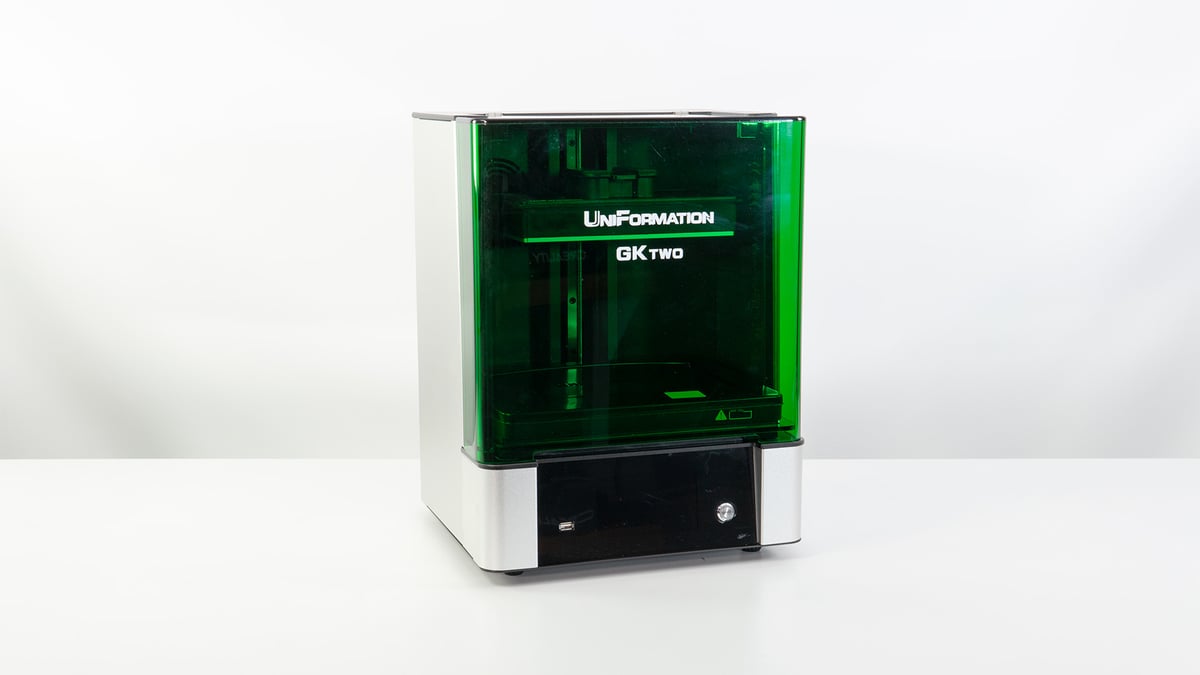
The UniFormation GKtwo is a mid-sized printer with oodles of design touches to make using it a tidier and smoother experience than other low-cost resin 3D printers. It may not offer cutting-edge resolution like the Photon Mono M5s or Mars 4 Ultra above (it’s still an infinitesimal difference to the eye if you ask us), but it offers the luxury of a quick-release print plate and slide-out resin vat, plus a hinged lid for convenient access to the build chamber.
The GKtwo also boasts a killer feature in its temperature-controlled heated resin vat. A crucial component of assured 3D printing success with resin is that the resin temperature is sitting pretty around 30 °C. Prints can work below this, but it’s a heck of a catalyst for reliable performance to have your resin warm. The GKtwo lets you select from one of three temperatures for your resin vat, and the printer will calculate in a heat-up period before your print commences. The entire system is automatic and baked into the printer’s software, making it an effortless print success system.
The GKtwo clearly takes inspiration from premium, prosumer resin systems and manages to bring the price down to a consumer-friendly level without compromising too much. It produces fabulously crisp prints, thanks to its mid-size 8K masking LCD, and, if your budget can stretch further, it can pair with complementary post-processing stations designed to fit the printer’s build plate. (You can, for example, take the plate straight out of the printer and lower it into a recess in the company’s ultrasonic cleaner for efficient, hands-off cleaning.)
The company’s footprint is small compared to the likes of Elegoo and Anycubic, so material online about the printer is sparse. With that said, it’s supported by popular third-party slicers, including Voxeldance Tango, Lychee, and Chitubox Basic. The provided slicing software is based on PrusaSlicer, which gives excellent support structure generation, so you may well be comfortable sticking with that instead.
A 12K LCD upgrade and Wi-Fi dongle for the GKtwo are due to be released soon, which will put the GKtwo head and shoulders above the rest.

Other Machines
There are a lot of 3D printers to consider for $200, $300, $500, and $1,000 budgets. Too many. This is part of why we’ve transformed our buyer’s guides to give even more focused advice on which 3D printers are worth consideration in a given category.
If you come to this list with an idea for what should be the best 3D printer under $200, $300, $500, and $1,000 and don’t see it listed, have a little patience. As always, we aim to test all the important and trending 3D printers to give you a clear idea of how they stack up against one another.
What's Changed?
We update our articles regularly. Here’s what we’ve changed over the months and years.
Update – February 20, 2024: The Elegoo Mars 3 is out of stock everywhere we look, with the machine seemingly discontinued. As such, we’ve slotted the Anycubic Photon Mono 2 in as our resin pick under $200.
Update – January 19, 2024: New year, new printers. We’ve been testing the Creality Ender 3 V3 SE and Bambu Lab A1 lately, and both are fantastic. They replace the Elegoo Neptune 3 Pro and Creality K1 as under $200 and under $500 picks, respectively.
Update – November 11, 2023: Some shuffling as Creality’s Ender 3 S1 drops off our list, and the company’s zippy enclosed K1 takes its place. Likewise, price drops see the Elegoo Neptune 3 Pro take the place of the Anycubic Kobra as our $200 pick, and the Bambu Lab P1S as our under $1,000 pick for filament 3D printers. The Creality Halot One Plus is discontinued, dropping off our list with the Elegoo Mars 4 Ultra jumping in its place. Also in resin 3D printing, price drops see the Anycubic Photon Mono M5s squeak in as a feature-rich under $500 pick, and the Uniformation GKtwo for under $1000.
Update – August 11, 2023: This year has seen a fair few changes to resin 3D printers, and this guide needed something of an overhaul. The Elegoo Mars 3, at its new reduced price, has slid over from our under $300 pick to take the take of its predecessor, the Elegoo Mars 2, as our under $200 pick. Replacing the $300 spot is the Creality Halot-One Plus, whose variant – the Halot-One Pro – previously held our $500 spot, but has been overtaken by the Elegoo Saturn 3 – which actually manages to take the $500 spot while staying under $300 itself. Finally, the Anycubic Photon Mono M5s has dethroned the Phrozen Sonic Mini 8K.
While we were here, we gave our filament 3D printer choices some thought. Not as much has changed, but the Sovol SV06 has proved to be a fan favorite, and we’ve slipped it into the under $300 spot, replacing the Anycubic Kobra which has slipped into the under $200 with its new reduced price, replacing the more barebones Voxelab Aquila X2.
Update — February 28, 2023: We popped in just to update our pick for the best machine under $1,000. Bambu Lab hit the scene in a big way, and its budget option, the Bambu Lab P1P, impressed us with an experience very similar to the full X1 Carbon — if without all the bells and whistles. Funny how one machine can dominate this category for so long just for its eventual successor, the Flsun V400, to have just a fleeting couple of months.
How We Test
If there’s one thing that testing a lot of 3D printers has taught us, it’s that a broad benchmarking scheme for 3D printers isn’t effective at giving you a sense of what a 3D printer is like to use and live with. Holding a sub-$200 self-assembled printer for hobbyists to the standard of a $6,000 production machine designed to handle engineering-grade materials won’t tell you that the former is a breeze to set up and the latter a tangled web of firmware updates, buggy systems, and unreliable performance.
We want our reviews and buyer’s guides to cut straight to the chase. What is it like to use a printer? What are the defining features like? What didn’t we like? And, more importantly, is it worth the money? We don’t want to get bogged down benchmarking numbers out of context or hung up on issues affected by more variables than we can control.
Who Are We Testing For?
Our buyer’s guides and reviews take the intended end user of a 3D printer into consideration. We imagine what they’re likely to do with it and focus the testing on challenging this. If we have a large-volume printer, for example, we’ll be printing – surprise, surprise – large prints, making use of the entire bed, and checking the performance at the limits of Z-height.
Other points of consideration for what makes the best 3D printer include ease of use, supporting software, and repair options. If something goes wrong, how easy is it to fix the machine? Does the documentation or customer service provide adequate information?
We strive to answer all these questions and more in our quest to find the best 3D printer for you.
Why Should You Trust Us?
Trust is important to All3DP, so our product testing policy is strict. When sourcing test units from a manufacturer, we do so under a zero guarantees policy. We make no guarantee of coverage in exchange for the printer, and the first time a manufacturer sees what we think is when we publish the content.
If a manufacturer doesn’t reclaim the unit after testing is complete, it is donated to a local cause or goes into deep storage for responsible disposal later. We occasionally buy machines for testing, too. In such cases, machines purchased by All3DP either remain in the office for team usage or are donated or disposed of in the manner described above.
Manufacturers or benefactors donating units for review do not influence the outcome or content of the reviews we produce. To the best of our ability, we will investigate abnormal issues with the manufacturer to glean better context or get insight into their awareness of the problem. But we make no excuses for poor design or bad QA.
How We Monetize Our Content
One method we monetize our content at no additional cost to the reader is through affiliate product links. If you click on a shopping link featured in our buyer’s guides and reviews, we may receive a small commission from the store if make a purchase. This is at no additional cost to you. For more meaty content policy details, we cover it all in the advertising and commercial activities section of our terms of use.
Which 3D Printer is Best for Me?
For most readers, our top recommended 3D printers are your best bet in a given category.
But, facing the fact that there is no one-size-fits-all solution to home 3D printing, we’re here to help. Here are some pointers to orient you in this terminologically dense but wonderful world. (A word on terminology, we have a handy glossary of terms to know at to bottom of this article.)
Beginner’s printers
Many 3D printers pitched for “beginners” or children go to such lengths to baby the user that they quickly become claustrophobic experiences. You will encounter more limitations than possibilities as your experience grows. If you aren’t satisfied with a “beginner” 3D printer’s features, we’d recommend a budget pick instead. You’ll save a little money, and the opportunity to learn by doing is far greater. And if something goes wrong, there are giant tribes online for each printer that have already asked and answered every question under the sun.
Follow the crowd
While the general quality of budget 3D printers has dramatically improved in recent years, quality control is often lacking. While manufacturers with large user bases are adapting to meet the demands of their newfound fans, including better customer support, there are usually better wells of knowledge to be found in the owners themselves, who contribute to the vast forum knowledge bases for some 3D printers.
Reviews matter
We have zero obligation to manufacturers to sugarcoat what we find, and the first time they read it is when you do too. That’s why you can trust our reviews. We don’t pander to anyone, and our experience with the printer is what you read on the page.
If you can’t find any information about a printer you’d like to know more about, let us know at editors@all3dp.com.
Understand the costs
A 3D printer for the home is rarely ever a one-and-done investment. Besides the continual purchase of materials, maintenance costs on perishable printer parts can stack up – think nozzles on an FDM printer or FEP film on an MSLA machine. Of course, parts can wear down or break, too, meaning sourcing replacement parts is a sensible consideration if you plan to print long-term. Printers with roots in the RepRap movement and open-source designs will be easiest to source parts for, with off-the-shelf components part and parcel of the design ethos behind them. Enclosed-design printers aimed at beginners may offer the gentlest introduction to printing, but your options to source spare parts will often be limited to the manufacturer. That’s if you can even get to and diagnose the problem.
Know why you want to 3D print
The thrill of a new hobby will only sustain you so far. Being the desktopification of an otherwise complicated manufacturing process, expect to encounter, sooner or later, problems with a home 3D printer – even the occasional show-stopping issue. Having an end goal in mind for your printing gives you purpose and a reason to learn the solutions to the problems. Printing simply because it looks cool will result in a small mountain of useless doodads and, eventually, disinterest at the hands of cost, frustration, and the buildup of useless plastic trash.
When you do know, pick a printer that will make it easier
Most home 3D printers are single extrusion fused deposition modeling machines, meaning a single printable material extruded through a single nozzle. Versatile enough for many applications through material compatibility, they’re safe machines to start with. But if you know you need to print objects with challenging geometries or semi-enclosed volumes, a dual extrusion printer would make your printing far easier. Likewise, single objects that need to have different material properties will only be achievable with dual extrusion. A resin printer will be the way to go for high-detail miniatures. Understand the technologies to find a printer that best suits your needs.
Pick a printer appropriate for your space
While the size of FDM 3D printers can vary greatly, the spillover is small. You’ll get some emissions from the filament melting, cloying the air, making it inadvisable to spend prolonged periods nearby. Generally speaking, the cleanup is minor and relatively easy to contain, depending on the models you print.
Resin 3D printing, however, is dramatically different and has unique demands that should make you think twice before investing. To varying degrees, the resin is smelly and toxic to you and the environment. It requires dedicated cleanup stations and personal protective equipment. You typically need 95 %+ isopropanol to clean prints and dissolve uncured resin from surfaces.
All printers should be operated in well-ventilated spaces, but this applies doubly to resin 3D printers.
Kickstarter – It’s complicated
While many excellent 3D printers have gotten their big break on Kickstarter, there’s the unavoidable issue that the platform is not a store. You are not buying a printer when you commit money to a campaign on Kickstarter; you are backing a vision. It’s putting money into the pot to help a company or person trying to achieve something.
You get nothing in return if a project is grossly mishandled and the money disappears. Often what you do get is the beta version of the product. You are paying for early access and all the wrinkles across all stages of the product that come with it.
We’re seeing more big-name companies turning to Kickstarter than ever to launch their products – it’s a safe way for them to gauge demand and drum up some interest against the pressure of a ticking countdown. Despite many companies being capable of outright launching products, they go cap-in-hand to enthusiasts with the promise of shiny new tech. Don’t be that user unless you absolutely must be the first to use a product and have money you can afford to lose.
We don’t think it’s worth the risk, but in the interest of cool new tech, report on new campaigns with our news coverage. You will never see a Kickstarter 3D printer in our buyer’s guides unless it has completed its campaign and the printer is widely available at retail, with all the protections that come with buying from a store.
Best Professional 3D Printers
But where’s the UltiMaker? Or Formlabs? What about Raise3D? Desktop Metal?
In the past, we’d list the best professional 3D printers alongside what we consider consumer or hobby-oriented machines (the printers we mainly focus on). An apples and oranges comparison, we know.
With this in mind, we created All3DP Pro, a wing of our content exclusively covering the professional applications of 3D printing and additive manufacturing solutions. Here’s a selection of articles covering the best 3D printers for professional use to get you started.
- The Best Professional 3D Printers Under $10,000
- The Best 3D Printers for Small Businesses
- The Best Metal 3D Printers in 2024
- The Best Carbon Fiber 3D Printers in 2024
- The Best Industrial Carbon Fiber 3D Printers
- The Best SLS 3D Printers in 2024
- The Best Independent Dual Extruder (IDEX) 3D Printers
- The Best Ceramic / Pottery 3D Printers in 2024
- The Best Dental 3D Printers of 2023
- PEEK 3D Printing – The Ultimate Guide
Glossary of Terms
Choosing the best 3D printer is tricky, not least because the terminology surrounding 3D printing is dense. Here are some need-to-know terms, their explanations, and useful links to help you on your way to 3D printing mastery.
FDM: Fused deposition modeling, otherwise known as FDM, is a 3D printing process that extrudes heated thermoplastic material through a moving nozzle to build an object layer by layer. FDM is a trademarked term, which led to the RepRap open-source movement to coin the alternative phrase “fused filament fabrication” (FFF), but the two are interchangeable.
Filament: Filament is the base material used to 3D print objects via FDM. The filament is typically a solid thermoplastic fed to a print head, heated to its melting point, and extruded through a small nozzle. Filament is commonly available in spools of either 1.75 mm, 2.85 mm, or 3 mm diameter widths – dimensions that dictate the printers that can use them.
G-Code: G-code is the machine language used to instruct computerized tools such as 3D printers. Giving coordinates and instructions for tool heads and other non-movement functions, it is almost exclusively generated by slicing software. It comprises a library of commands to control specific actions like motion, speed, rotation, depth, and other related switches and sensors used in a machine’s operation. You can get to grips with G-code in no time with our guide to G-code commands.
Heated bed: This is a build plate that is heated so that the few layers of extruded plastic are prevented from cooling too quickly and then warping. A heated bed is essential for working with ABS or PETG materials but not so much with PLA.
Hot end: This is the cluster of components that heat and melt the plastic for deposition through the nozzle.
Extruder: Used by some to describe the entire system of parts that pushes and melts filament, extruder can also refer specifically to the motor and accompanying gears that grip the filament, feeding it to the hot end. How the extruder is arranged can affect the printer and its capabilities. There are two common arrangements: Bowden and direct. It’s a messy subject with overlapping terms and technical explanations; our guide to 3D printer extruders gives you all the knowledge to make sense of it.
Bowden: A style of extruder that sees the extruder motor positioned away from the hot end – typically the structural frame of the printer or on one end of the X-axis gantry. So-called for the Bowden cable and its action of allowing a wire to move freely within tightly constraining tubing, the Bowden extruder feeds filament through a PTFE tube directly into the hot end.
Direct Extruder: The other commonly seen extruder type, a direct extruder sees the extruder motor and associated feeding mechanism mounted directly to the hot end, with barely any distance between the feed and the melt zone of the hot end.
Dual Extrusion: Some 3D printers carry two extruders/hot ends, allowing them to incorporate multiple colors or materials into the same print job. While the obvious appeal comes from the possibility for decorative two-tone prints, the real benefit of dual extrusion systems is combining different materials, such as dissolvable support material, to enable the printing of otherwise impossible geometries. It’s a deep topic worth exploring more in our guide to all you need to know about dual extrusion.
PLA: Polylactic Acid, otherwise known as PLA, is a thermoplastic commonly used as a material for printing with FDM 3D printers. It’s easy to work with and is available in many colors and finishes. PLA is somewhat brittle – don’t expect to print strong items with it – but it remains popular for decorative printing thanks to its low cost. You can learn more about PLA in our guide dedicated to the topic.
SLA: Stereolithography is a 3D printing technology that falls under the broader process of vat photopolymerization. The term is often (incorrectly) used to describe all methods of vat polymerization – really, it’s a particular technology that uses a directed laser beam to trace layers into a vat of liquid photopolymer resin. Alongside SLA, other technologies are considered vat polymerization.
Resin: The material used in desktop SLA, DLP, and LCD (MSLA) 3D printers. A blend of chemicals that includes a photoinitiator, resin solidifies under ultraviolet light. Highly toxic and difficult to clean up after a spill, care, attention, and personal protective equipment are musts when working with resin. It is an unpleasant material, and wastage must be disposed of in accordance with local laws. Despite all the warnings, it’s the only way to go for intricate detail.
LCD 3D Printer: A common term for resin 3D printers that use an LCD as a layer mask over UV light. The de facto standard in inexpensive resin 3D printers, the technology is cheap and widely used. The LCD panels are consumable, though, with monochrome LCDs typically having lifespans in the low 1,000s of hours.
MSLA: Mask stereolithography (MSLA) is a term coined by Structo but popularized by Prusa Research. It refers to, basically, the LCD 3D printer as described above.
Micron: One-thousandth of a millimeter. This unit of measurement is commonly used in 3D printing as a value to indicate accuracy, resolution, or surface finish.
Slicer: 3D printing works by building an object layer by layer. A slicer is a program that divides a 3D model into flat layers and generates the machine code for the printer to trace out said layers. The output of a slicer for FDM 3D printers is typically G-code, which gives instructions and coordinates for the printer to execute. Our deep dive explaining what exactly a slicer is gives good foundational knowledge. Many popular slicers are free and open source. Others are proprietary and machine-specific. It’s an essential tool for successful 3D printing.
STL: STL is the most popular file format for 3D printing. Developed by 3D Systems in the ’80s, the STL file type only contains the surface geometry of a 3D object. Despite industry efforts to move onto more efficient and data-rich formats such as 3mf, STL endures and is the most commonly found 3D model file type on popular 3D model file repositories. We explain in more detail in our guide to what exactly STL is.
Open Source: The term given to a product, typically software, but also applicable to hardware that is freely open for others to modify and redistribute according to their needs. In 3D printing, this is often in the spirit that individuals are free to modify, improve, and share changes to the source material for others to test, iterate, and reciprocate. Open source licenses govern the fair and correct usage of open source works, giving terms and conditions that ensure the freedom of access to the creation and any derivatives.
RepRap: A project started in 2005 by Dr. Adrian Bowyer, a mechanical engineering lecturer at the University of Bath. Created to develop a replicating rapid prototype, a low-cost machine capable of printing replacement parts for itself or other new machines. The vast majority of desktop 3D printers stem from the work laid down by the RepRap project. We have a fascinating alternative RepRap Wiki page on the topic if you want to dig deeper.
License: The text of "The Best Budget 3D Printers in 2024 (FDM & Resin)" by All3DP is licensed under a Creative Commons Attribution 4.0 International License.
CERTAIN CONTENT THAT APPEARS ON THIS SITE COMES FROM AMAZON. THIS CONTENT IS PROVIDED ‘AS IS’ AND IS SUBJECT TO CHANGE OR REMOVAL AT ANY TIME.


